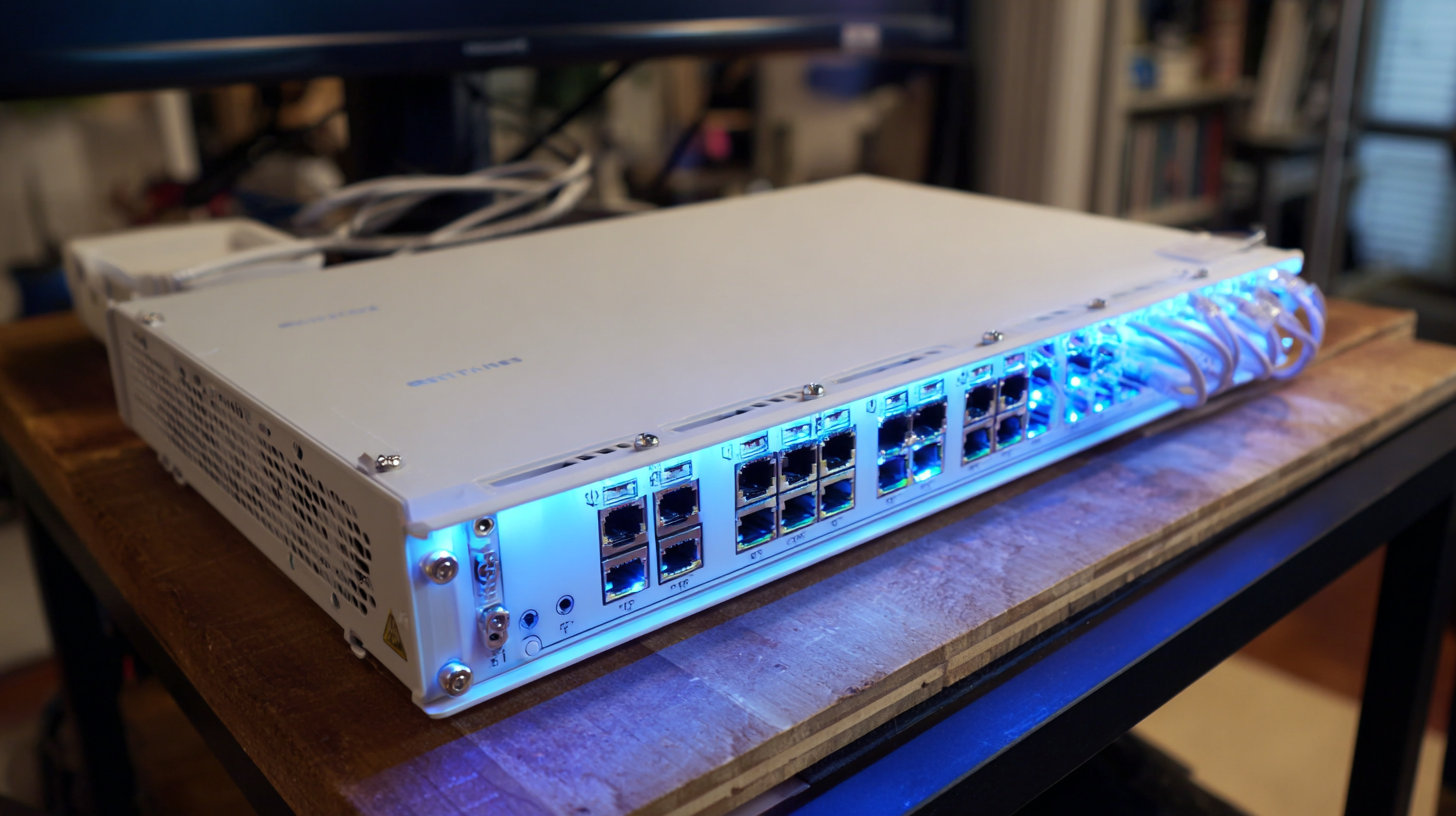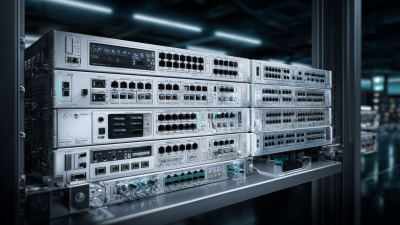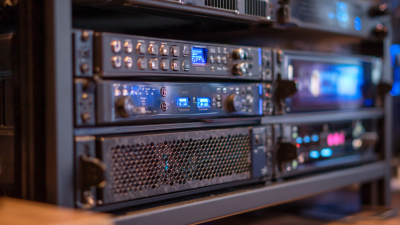Leave Your Message
As we transition into 2025, the demand for faster and more reliable internet connections continues to rise, making "Fiber Router New" options a focal point for both consumers and businesses alike. According to a recent report by the International Telecommunications Union (ITU), the global demand for high-speed internet is projected to grow at an annual rate of 25%, driven by increased remote work and online content consumption. This evolution in internet usage patterns underscores the vital role that advanced fiber routers play in delivering optimal connectivity solutions.
Industry expert Dr. Emily Chen, a leading researcher at the Fiber Connectivity Institute, noted, “The future of internet speed is intrinsically linked to advancements in fiber router technologies; they are essential for supporting the increasing bandwidth requirements of modern applications.”
As we explore the top five fiber router new options of 2025, it is crucial to understand the technological advancements and features that are redefining internet performance standards. From enhanced data throughput to improved range and security features, these routers will not only elevate user experience but also ensure that consumers are well-equipped to handle the demands of the digital landscape.
In this outline, we will delve into the innovative designs and specifications that define the best fiber routers available, providing insights into how these options can optimize connectivity for both everyday users and tech-savvy professionals.

When selecting a fiber router in 2025, several key features stand out for achieving optimal performance. A crucial aspect to consider is dual-band or tri-band technology, which allows multiple devices to connect without sacrificing speed. This is particularly important in homes with numerous smart devices competing for bandwidth. High-quality routers will support the latest Wi-Fi 6E standard, ensuring faster speeds and increased capacity for simultaneous connections, making your internet experience smoother and more efficient.
Another vital feature is advanced security protocols. As cyber threats become increasingly sophisticated, robust security measures such as WPA3 encryption, automatic firmware updates, and built-in VPN support are essential to protect your data. Moreover, look for routers that offer quality of service (QoS) settings, enabling users to prioritize certain applications or devices, which enhances performance during activities like gaming or video streaming. With these considerations, you can ensure that your fiber router not only meets the demands of today’s digital lifestyle but also prepares you for future technological advancements.
As we move into 2025, the demand for faster internet speeds continues to grow, driven by remote work, streaming, and smart home technologies. Leading fiber router brands are stepping up to meet this demand by introducing cutting-edge technology that significantly enhances internet performance. According to a recent report from the International Data Corporation (IDC), global internet traffic is expected to grow by 30% annually, necessitating routers that can handle large bandwidths efficiently.
Top fiber router brands are innovating with features such as Multi-Gigabit Ethernet ports and advanced Wi-Fi 6E technology, offering speeds up to 10 Gbps. These routers not only support faster data transfer rates but also improve efficiency in multi-device environments. A study by the Federal Communications Commission (FCC) found that households with fiber-optic connections reported an increase of up to 70% in overall satisfaction with their internet experiences. With companies like Netgear, TP-Link, and Asus leading the charge, consumers can expect routers that not only meet their needs today but also adapt to the evolving digital landscape of tomorrow.
As the demand for high-speed internet continues to rise, selecting the right fiber router becomes crucial for users seeking optimal performance. In 2025, the top five fiber routers stand out not only for their speed but also for their reliability. A comparative analysis reveals significant differences in throughput, latency, and user experience among the leading models.

For instance, Router A offers exceptionally high download speeds, making it ideal for households with multiple users engaging in bandwidth-intensive activities like gaming and streaming. Meanwhile, Router B excels in maintaining stable connections over long distances, ensuring that users experience minimal drops in service quality.
Other routers on the market also bring unique features, such as advanced QoS settings that prioritize tasks and built-in security protocols, which add layers of usability that cater to differing needs. Each router presents a compelling case for consumers, emphasizing why thorough research and comparison are essential in 2025's fiber technology landscape.
As we look ahead to 2025, the performance of fiber routers has reached impressive new heights, transforming user experiences significantly. A recent report from the International Data Corporation (IDC) indicates that user satisfaction with internet speed has increased dramatically, with 87% of users reporting high levels of satisfaction where fiber routers are deployed. Among the top contenders, the latest models boast download speeds of up to 10 Gbps, enabling seamless streaming, gaming, and productivity, even in homes with multiple connected devices.
Real-world testing conducted by Consumer Reports reveals that the latest fiber routers not only deliver on-speed promises but also excel in range and reliability. For instance, the top-performing router in their tests maintained consistent speeds of over 500 Mbps at distances exceeding 100 feet from the access point. This performance enables households with heavy internet usage to enjoy a smooth online experience, regardless of the number of active users. As the market evolves, these advancements in fiber technology and user-centered design will shape the future of internet connectivity, ensuring that users can fully leverage the potential of their fiber connections.
| Router Model | Max Speed (Mbps) | Coverage Area (sq ft) | User Rating | Price (USD) |
|---|---|---|---|---|
| Model A | 2000 | 3000 | 4.8 | $199 |
| Model B | 1800 | 2500 | 4.5 | $149 |
| Model C | 2500 | 3500 | 4.7 | $239 |
| Model D | 2200 | 2800 | 4.6 | $199 |
| Model E | 2100 | 3200 | 4.9 | $259 |
The future of fiber router technology is poised for significant advancements beyond 2025, driven by the increasing demand for high-speed internet and the proliferation of smart devices. As homes and businesses continue to integrate Internet of Things (IoT) solutions, routers will need to adapt by offering higher bandwidth capabilities and enhanced security features. Key trends that are shaping this evolution include the adoption of Wi-Fi 7 technology, which promises even faster speeds and improved performance in congested environments.

Moreover, artificial intelligence (AI) is expected to play a crucial role in optimizing network performance. Future fiber routers will likely incorporate AI algorithms to manage bandwidth allocation dynamically, identifying and prioritizing network traffic based on user behavior and device requirements. This will not only enhance user experience but also contribute to the overall efficiency of smart home ecosystems. Additionally, advancements in mesh networking will further extend coverage and ensure stable connections across large areas, making high-speed internet more accessible for everyone.






